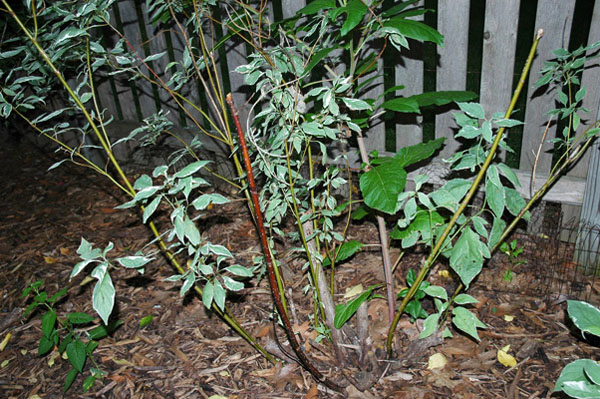Issue 1, April 17, 2009
Spring Clean-up for Plant Disease Management
As we look around the landscape now we see fresh, new growth emerging. There is not a great deal in the way of disease problems at present. To help keep it that way longer, try some of these common sense spring clean-up tips.
Once the threat of a major frost is past, remove old foliage from around annual and perennial beds, grasses, and weedy areas. Many diseases caused by fungal pathogens, such as Cladosporium leaf spot of peony or anthracnose of hosta, will over-winter on old, infected foliage. Tender new spring foliage is more susceptible to fungal infection than older, thickened leaves. Spring weather is usually cool and moist, favoring fungal growth. Removing the old, infected foliage will reduce the amount of fungal inoculum that might otherwise infect in the favorable spring conditions.
Remove dead wood in trees and shrubs. Most of the wood rotting fungi and canker fungi invade stressed or injured wood. They will, however, move from a dead stem into the older wood in the same plant. Now is a good time to remove dead or cankered wood. It is easy to spot against the new growth. Examples include dead branches from Cytospora canker on spruce, rose cane cankers, and stems of redosier dogwood killed by winter stress and subsequent canker fungi. If you are removing dead wood from pears, disinfect pruners between cuts to avoid spread of potential pathogens such as the bacterium causing fire blight.

Cankers on redosier dogwood.
Pines infected with Diplodia can benefit from spring clean up. Remove the dead stem tissue. Rake and remove pine cones where this fungus overwinters.
It is usually a good idea to avoid putting diseased material in compost piles. Infected foliage should be safe if the composted material is allowed to decompose. When in doubt, find other means of disposing of diseased plant material.--Nancy Pataky
Author:
Nancy Pataky